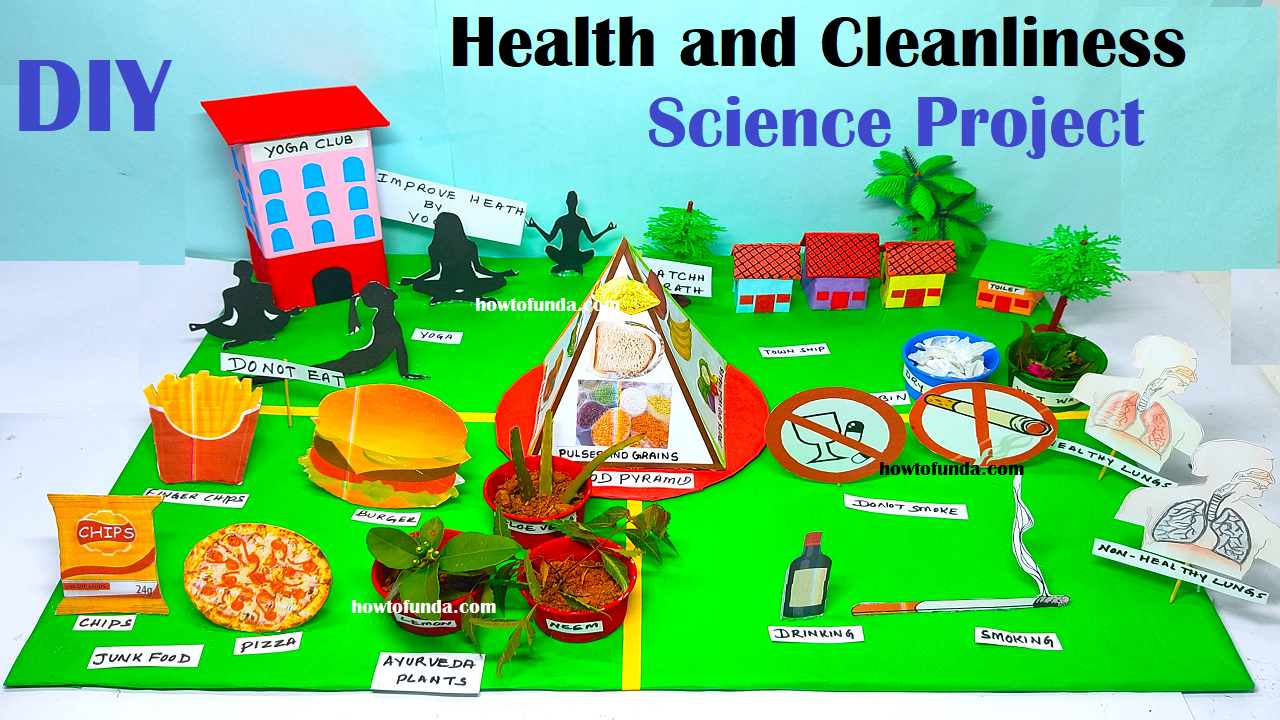A health and cleanliness science project highlights the importance of maintaining hygiene and adopting healthy habits to prevent diseases and promote overall well-being.
This project can focus on concepts like personal hygiene, waste management, clean water access, and the role of cleanliness in community health.

Key Components of the Model:

- Personal Hygiene: Include items like toothbrushes, soaps, towels, and handwashing setups to emphasize the importance of cleanliness.
- Clean Water Supply: Demonstrate a water filtration system or clean drinking water sources.
- Waste Management: Use miniature dustbins to showcase segregation of biodegradable and non-biodegradable waste.
- Community Cleanliness: Model clean streets, parks, and public toilets to demonstrate the role of community effort.
- Healthy Living Practices: Represent healthy eating, regular exercise, and vaccination for disease prevention.
How It Works(health and cleanliness science project):
- Personal Hygiene: The model can show how regular handwashing, brushing teeth, and bathing prevent germs and infections.
- Clean Water: A simple filtration system using sand, gravel, and cotton demonstrates how clean water is essential for health.
- Waste Management: Illustrate how proper disposal and recycling reduce pollution and disease.
- Health Practices: Highlight how a balanced diet, regular physical activity, and vaccinations keep the body strong and immune to diseases.
- Community Cleanliness: The model can depict clean and dirty environments, explaining how cleanliness in shared spaces reduces health risks for everyone.
Applications and Learning:
- Disease Prevention: Emphasizes the role of cleanliness in stopping the spread of illnesses.
- Environmental Impact: Shows how managing waste and pollution improves both health and the planet.
- Healthy Habits: Encourages daily routines that promote physical and mental well-being.
This project underscores the link between health and cleanliness and inspires responsible practices for a healthier community.

